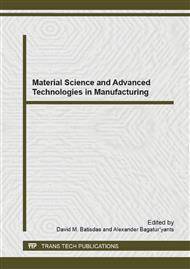p.86
p.92
p.96
p.101
p.106
p.111
p.117
p.121
p.127
Wasted Low Grade Iron Ore with High Phosphorus Reuse for Phosphate Removal from Aqueous Solution by Using a Factorial Design
Abstract:
Low grade ore iron with high phosphorus (LGIOWHP) is used as an adsorbent to remove phosphate from aqueous solution. The orthogonal experiment of L16 (45) was used to study the effects of experimental parameters on the phosphate removal rate. The important degree of the effects of parameters on the phosphate removal rate is as follows: initial pH > stirring speed > reaction time > reaction temperature > adsorbent dosage. The results show that the phosphate removal rate exceed 99% under the conditions of pH 5.6, temperature 65 °C, reaction time 75 min, particle size <0.147 mm, initial phosphate concentration 20 mg/L, adsorbent dosage 60g·L-1 and stirring speed 200 r·min-1. After phosphate removal reaction, the phosphate concentrations completely meet the requirement of national discharge standards of the second category pollution (GB 8978-1996 ).
Info:
Periodical:
Pages:
106-110
Citation:
Online since:
January 2014
Authors:
Price:
Сopyright:
© 2014 Trans Tech Publications Ltd. All Rights Reserved
Share:
Citation:


